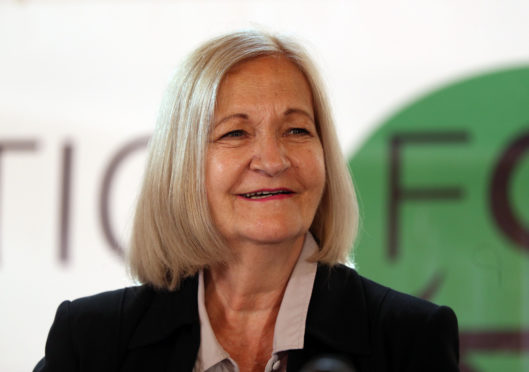Years ago, when writing about a high-profile Highland murder, I was shown wedding photographs of the female victim and the husband who was later convicted of killing her.
It was like looking through a window at a moment frozen in time, banging on the glass to try to reach in and capture what was once there.
It seemed incredible that the elation captured by the photographer had been replaced with violence, and it struck me, then, how thin the line is between love and hate – how one morphs almost seamlessly into the other, like a lava lamp that changes colour from orange one minute, to purple the next.
It came back to me watching Sally Challen, who appeared on the BBC this week talking about her conviction in 2010 for murdering her husband, Richard, with a hammer, after living for 31 years in an abusive marriage.
She was released after nine years when her murder conviction was appealed and the charge reduced to manslaughter on the grounds of diminished responsibility. Most remarkable, perhaps, was the fact it was her two sons who fought most vociferously for her to be excused the murder of their father.
“She deserves justice,” said her son, David. “People need to understand that she killed my father not because she is a bad person, but because he drove her to the edge. He bullied and humiliated her, isolated her from her friends and family, controlled who she could socialise with, controlled her money, restricted her movement and created a culture of fear and dependency.”
The case challenges all of us on so many levels to examine our attitudes and judgements towards crime and punishment and our notions of “good” and “bad”.
Sally Challen does not deny she killed her husband. For some, that means she should be locked up no matter what. She had the hammer in her handbag. Does that not prove a level of premeditation? But she does not remember putting it there. And she is hardly a public danger.
From the luxury position of a “normal” life (no matter how much we think we crave extraordinary ones) it is easy to make justice a simplistic application of rigid rules that do not bend, no matter the circumstances. Black is black, and white is white, and the rules apply equally to everyone. The problem is, applying rules equally does not result in equality.
Who knows what is “normal” when you are in Sally Challen’s position, what provocation really means when you are pushed beyond your limits? As the song says, if we could change places for an hour, and you could be me and I could be you, what insights would we get?
“Walk a mile in my shoes and before you accuse, criticise and abuse, walk a mile in my shoes.”
What was clear watching Sally Challen is that part of her is broken. You can release someone from prison, but you cannot always unbolt the locks in their own mind. Her husband had raped her over the years, visited brothels, belittled her, and controlled her movements and behaviour. But despite everything, she had wanted to be with him. She had killed what she loved.
Her anguished expression when the interview moved from facts to feelings was painful to watch. She should have been stronger, she said. Should have left him years before. This woman may have killed Richard Challen but clearly, she had not cut the ties between them, or destroyed the power he had over her.
Earlier this year, the Scottish Government made important changes to the Domestic Abuse (Scotland) Act to include controlling and coercive behaviour.
Now, it is a crime to frighten, humiliate, degrade or punish a partner. To make them dependent on you, subordinate to you, or to restrict their freedom. To isolate them from friends and relatives and cut off their sources of support. To control, regulate or even monitor their daily activities. In other words, to stop them being the person they really are.
The act highlights the fact that it is not only physical abuse that damages. Psychological abuse is also a form of violence and is sometimes longer lasting. Sally Challen felt as if “someone else” killed her husband. Perhaps it was. It is true that we are all responsible for our own actions, but we also have to take some responsibility for what we make other people feel.
This is a difficult issue but no less important to tackle just because it is less defined than physical abuse, with less obvious and measurable consequences than a bleeding nose or broken bones.
It is tragic that a man lost his life but if Sally Challen’s sons’ assessment that she is not a bad person is correct – and who is better placed to judge in this instance? – then I hope that she finds the key to the mental prison that incarcerates her. Only then can she become the person she should have been for the last 30 years.
Catherine Deveney is an award-winning investigative journalist, novelist and television presenter











